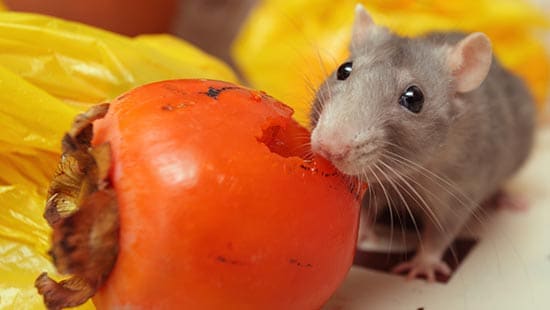Winter Pest Control

Whether your food facility is located in the frigid north or hot south, winter months mean cooling weather, which can significantly impact pest behavior. You can take steps to make your facility pest resistant by having a winter pest control practice. This includes filling holes and gaps, keeping doors closed and inspecting all incoming deliveries for stowaway pests.
How Cold Weather Affects Pest Behavior
In winter weather, the insides of non-temperature controlled trucks can get nearly as cold as the outside air. While this could kill off some pests seeking shelter, it can cause others to burrow deeper into the goods being transported, making it more difficult to spot them when the truck arrives at your loading dock. This doesn’t mean that temperature-controlled trucks are safe from pests, however; any shelter from the elements can be attractive to pests—particularly one with readily available sources of food and/or water.
Excessive cold can also be a problem for perishable goods such as fruits and vegetables. Deterioration can draw pests that are attracted to decaying organic matter. And if farmers are not regularly inspecting stored grains through the winter, infestations can go undetected. While some stored product pests will remain active year round, others will overwinter in sheltered sites or deep within foods or packaging. For example, the maize weevil larvae will remain within corn or grain kernels during the cold months of winter, meaning that it will be more difficult to spot pest presence.
It also is important to consider the origination source of the delivery. Even if your facility is in a temperate area, a shipment coming from a colder region could have pests that took refuge from the cold, while a shipment from a warm climate could be harboring pests that you don’t expect this time of year or are not native to your area.
Tips for Winter Pest Control
Inspect deliveries before they are brought into the facility.
Using a flashlight, look around, on and in boxes, crates and pallets. When lots are plastic-wrapped, look under the clear plastic; if you see small flies, moths, larvae, webbing or eggs, it is likely that there is an infestation of some type.
Look for live or dead insects and rodents.
This is the most visible sign of pest presence. Other signs include droppings and piled nesting material in and around product and in corners of the truck; gnaw marks and damaged packaging that can mean rodents are taking refuge; and off-odors and musty smells in grains which can indicate mold, while high temperature, moisture and hot spots can be indicative of a pest infestation.
Close dock doors when not in use.
If dock doors are open during cold weather, not only are you losing heat from within the building, but that heat and the food smells it likely carries can attract pests that have been caught out in the cold. Minimize the attraction of pests to your facility by keeping doors closed as much as possible. Additionally, ensure any gaps or structural issues around doors and windows are addressed to reduce access points where pests may enter.
More Pest Resources
Although there are many different types of rodents, they can all have the same fatal impact on your business.
To win the fight against rodents, teach employees how rodents can enter your facility, the signs of their presence and the damage they can cause.
Large flies can transmit at least 65 diseases to humans, making fly control particularly important for restaurants and food retail.
Rats and mice can be a public health concern, cause damage to your inventory and facility and hurt your brand reputation.
Whether you're running a restaurant, hotel, warehouse or other commercial facility, Ecolab can help you win the fight against pests.



